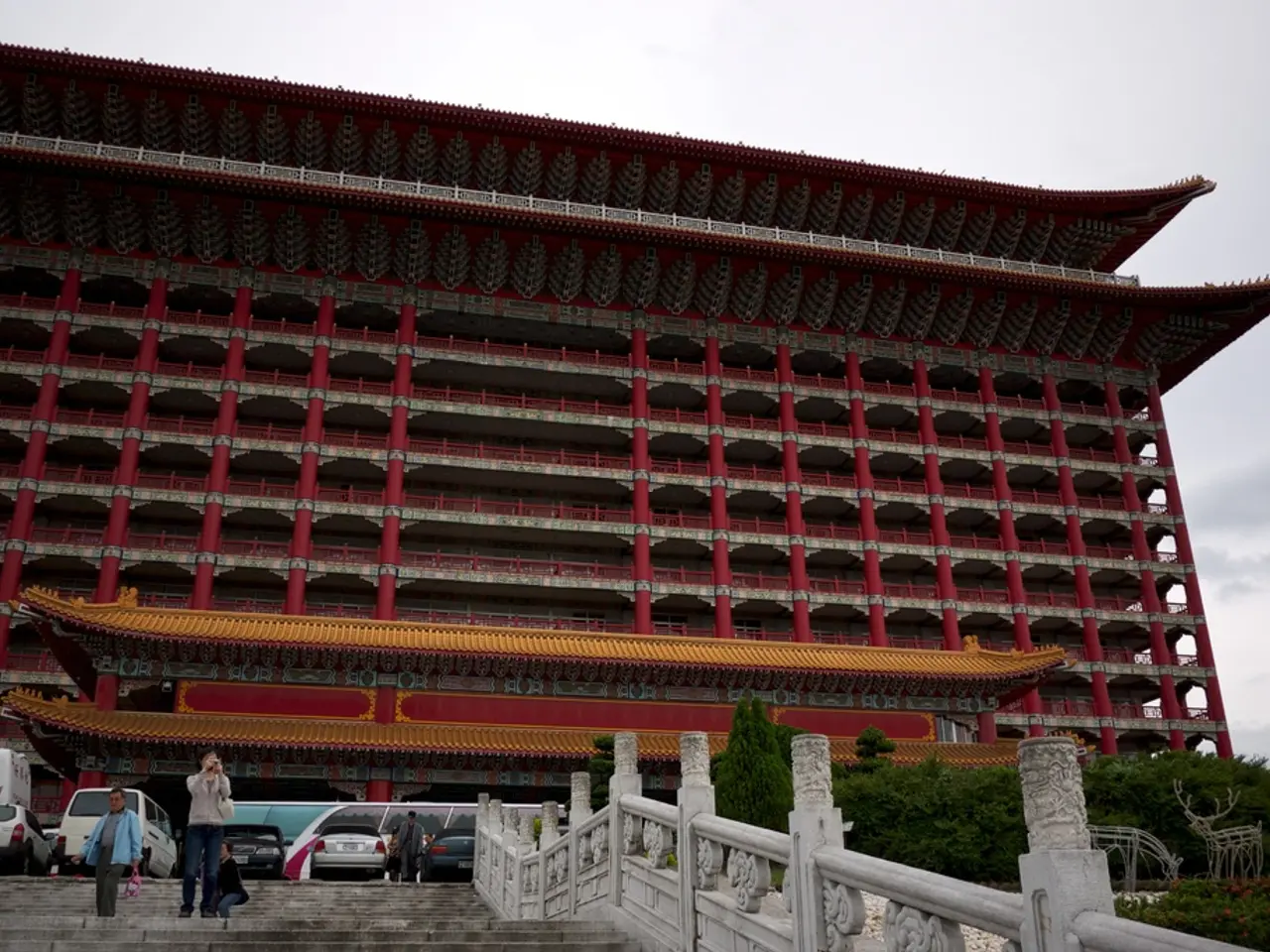Instructions for energy-saving skylights
When it comes to enhancing a listed or heritage building, choosing the right conservation rooflight is crucial. Genuine conservation rooflights should not only replicate the look of original cast-iron or traditional skylights but also meet modern standards for energy efficiency and usability, while complying with building regulations and conservation requirements [1][2][3][4][5].
Authenticity is key, with painted timber frames and traditional opening mechanisms such as top-hung casements with exposed hinges helping to maintain the character of the building [1][3][5]. Materials and finish are carefully selected to match historic aesthetics and blend seamlessly with the existing building fabric [3].
Energy efficiency is another important consideration. While replicating a traditional look, genuine conservation rooflights must meet today's high standards for thermal insulation. Double or triple glazing with low U-values is crucial for energy efficiency and reducing heat loss, important for UK climates and building regulations compliance (Part L) [1][4].
Conservation rooflights typically fall under stricter planning rules, especially in conservation areas or listed buildings. Ensuring compliance with relevant building regulations regarding energy efficiency, safety (fire escape access if applicable), and heritage conservation is essential [2][3][4].
Glazing options for comfort include solar control glazing to reduce overheating while allowing daylight, and self-cleaning glass for ease of maintenance. This is particularly important for rooflights positioned at difficult-to-access heights [2].
The placement, size, and orientation of the rooflight influence natural light, privacy, and thermal comfort. When roof orientation is constrained, solutions like sand-blasted glass or integrated blinds can balance light with privacy needs. Also, the roof pitch must be compatible with the rooflight type, especially in period homes [2][4].
A small number of companies specialize in manufacturing conservation rooflights, with even fewer doing so in the UK. Ideally, conservation rooflights should have slim, clean lines and a low-profile to match the roofline. The clear viewable area of a conservation rooflight can vary significantly between manufacturers [6].
Not all conservation rooflights are suitable for all building types. Most authentic conservation rooflights are manufactured from 316L stainless steel for strength and resistance to the elements. Approval is required for using conservation rooflights in listed buildings or conservation areas [7].
A decent triple-glazed unit is about 50% thicker than a double-glazed version, making it less suitable for flush fitting profiles. Modern building standards require double glazing for thermal efficiency, making it the most popular option for conservation rooflights [8].
Choosing the right conservation rooflight can be challenging, but with the right guidance, it doesn't have to be stressful. Many conservation rooflights available online are not genuinely designed for conservation purposes. Bulky framed modern types and flat rooflights posing as pitched conservation styles let in less light than genuine steel-framed versions [9].
For a close replica of a Victorian rooflight, a top-hung profile is recommended as it maximizes the space below and uses brass ironmongery. The price of a conservation rooflight is a reflection of its quality. Centre pivot designs tend to rely on modern plastic handles, which are not aesthetically pleasing and do not enhance the internal aesthetics [10].
Genuine glazing bars should divide the glazing and provide additional strength to the casement. A stuck-on glazing bar is not an acceptable alternative and does not provide any benefit to the rooflight [11].
For more information, discussion, or to discuss your conservation rooflight requirement, contact the Stella Rooflight team (contact details provided) [12].
- While maintaining the original charm, a lifestyle upgrade might include installing a conservation rooflight with energy-efficient glazing and thermal insulation, meeting modern standards for comfort and energy efficiency.
- When remodeling a heritage building in a fashion-and-beauty aspect, it's essential to ensure the conservation rooflight's glazing options, such as solar control and self-cleaning glass, blend aesthetically with the structure.
- Practical needs in pet care, such as ensuring sufficient natural light, can be addressed by strategically positioning a conservation rooflight that optimizes the balance between light and privacy, especially in pet-friendly homes.
- To create a perfect ambiance for travel memories, a genuine conservation rooflight, replicating the look of original skylights and offering energy efficiency and usability, could be an ideal candidate for a cozy home-and-garden transformation.
- An excellent addition to your food-and-drink experience can be achieved by introducing natural light through the use of conservation rooflights, tastefully complying with building regulations and conservation requirements while prioritizing energy efficiency and aesthetics in your cars or shopping center.




